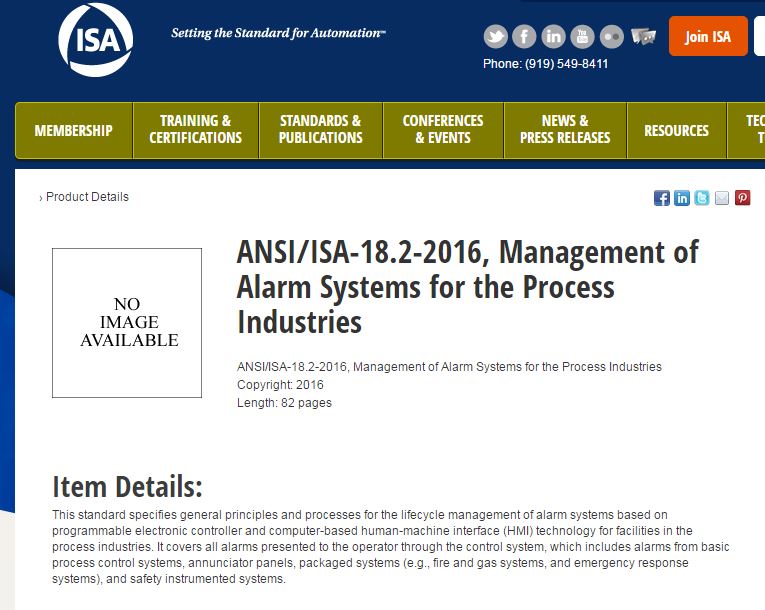
Click here to purchase
This standard specifies general principles and processes for the lifecycle management of alarm systems based on programmable electronic controller and computer-based human-machine interface (HMI) technology for facilities in the process industries. It covers all alarms presented to the operator through the control system, which includes alarms from basic process control systems, annunciator panels, packaged systems (e.g., fire and gas systems, and emergency response systems), and safety instrumented systems.
The practices in this standard are applicable to continuous, batch, and discrete processes. There can be differences in implementation to meet the specific needs based on process type.
In jurisdictions where the governing authorities (e.g., national, federal, state, province, county, city) have established process safety design, process safety management, or other requirements, in addition to the requirements of this standard, these should be taken into consideration.
The primary function within the alarm system is to notify operators of abnormal process conditions or equipment malfunctions and support the response. The alarm systems can include both the basic process control system (BPCS) and the safety instrumented system (SIS), each of which uses measurements of process conditions and logic to generate alarms. Figure 1 illustrates the concepts of alarm and response dataflow through the alarm system. The alarm system also includes a mechanism for communicating the alarm information to the operator via an HMI, usually a computer screen or an annunciator panel. Additional functions of the alarm system are an alarm and event log, an alarm historian, and the generation of performance metrics for the alarm system. There are external systems that can use the data from the alarm system.
Product Details
- Published:
- 03/17/2016
- ANSI:
- ANSI Approved
- Number of Pages:
- 82